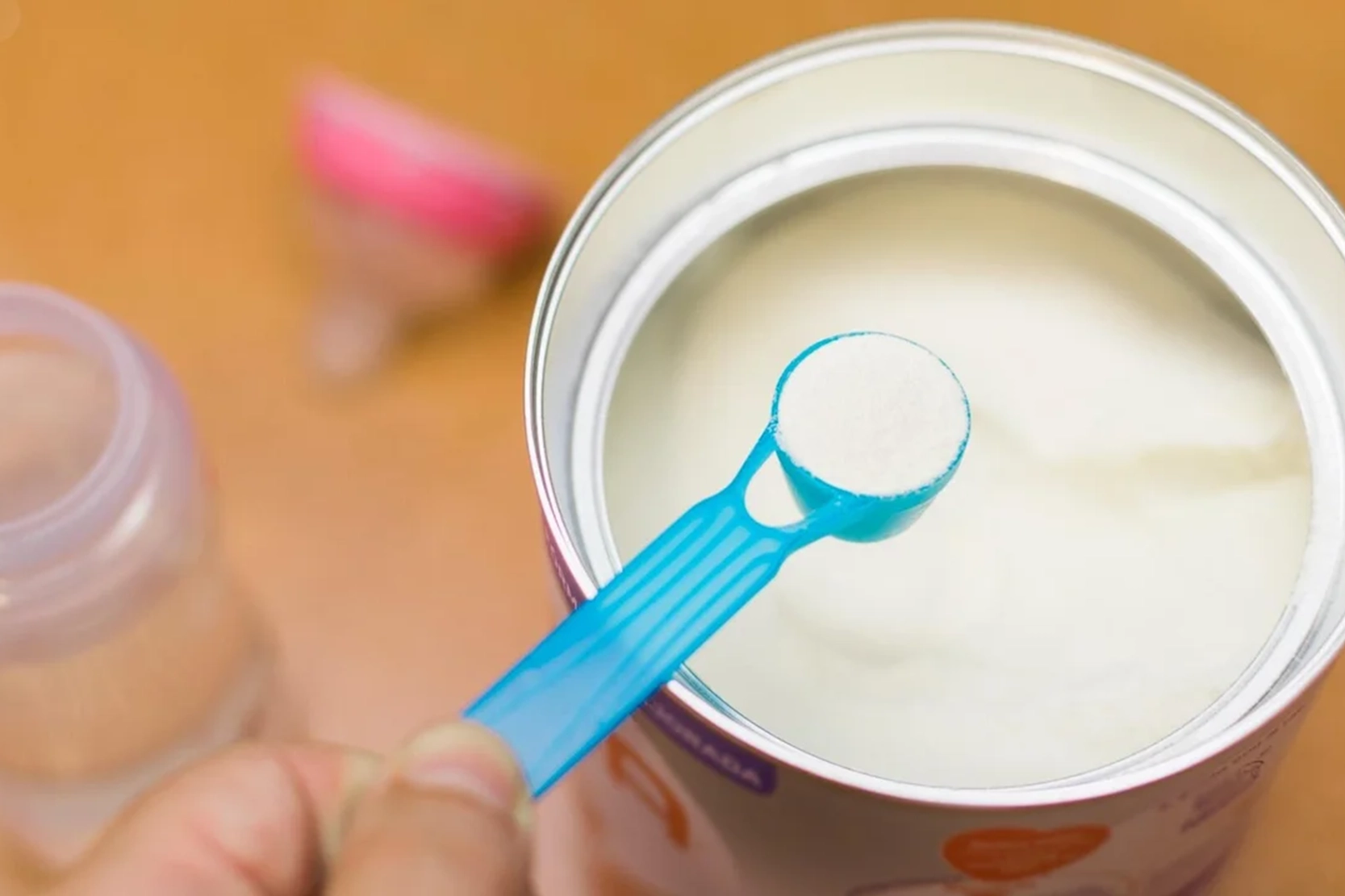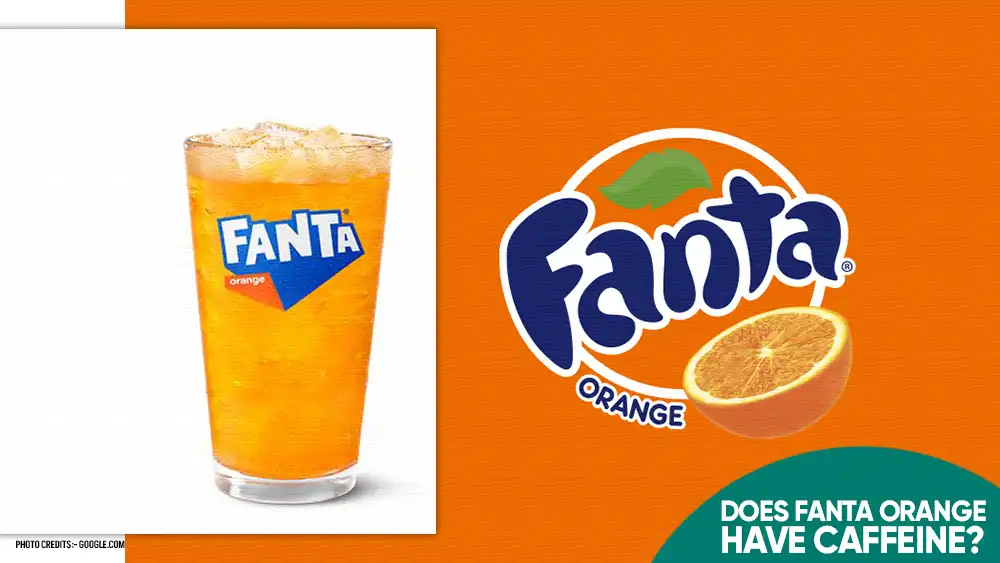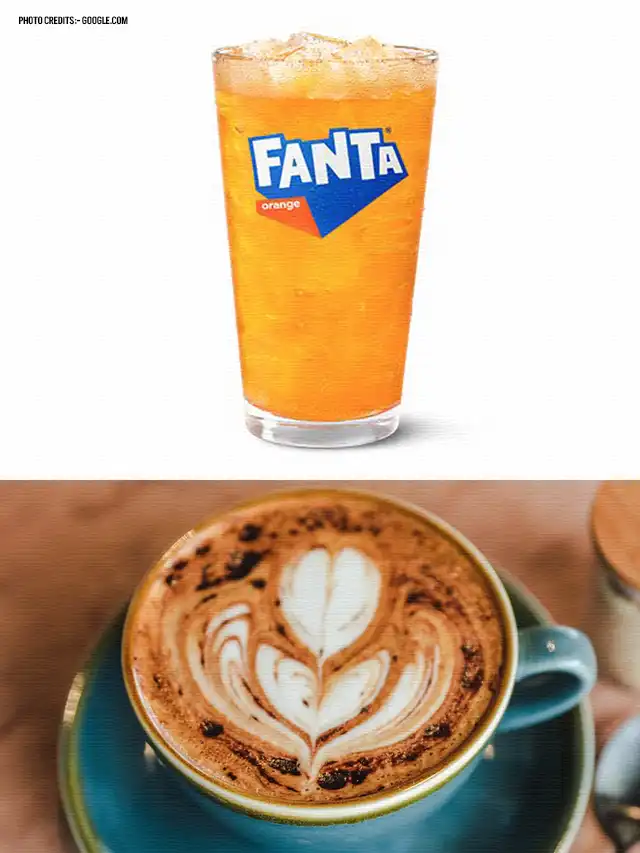
HEALTH BLOG
Does Fanta Orange Have Caffeine? Your Complete Guide to 2024
-
Rahul Priydarss
Discover the answer to “Does Fanta Orange Have Caffeine?” Fanta Orange is a popular caffeine-free soda known for its vibrant citrus flavor and refreshing appeal. Learn why Fanta Orange is enjoyed by many, whether for its crisp taste on its own or as a versatile mixer. With its caffeine-free formulation, Fanta Orange offers a fizzy beverage option suitable for all ages, perfect for those looking to enjoy a soda without the stimulating effects of caffeine.
Introduction of Does Fanta Orange Have Caffeine?
Many enjoy Fanta Orange, a beloved soft drink for its vibrant citrus flavor and refreshing taste. As consumers become more health-conscious and ingredient-aware, questions about the contents of their favorite beverages have become increasingly common. One such question is whether Fanta Orange contains caffeine. This inquiry is particularly relevant for those sensitive to caffeine, such as children, pregnant women, and individuals looking to reduce their caffeine intake. Understanding the ingredients and nutritional content of Fanta Orange can help consumers make informed choices about their beverage consumption. This article delves into the specifics of Fanta Orange’s ingredients to answer the pressing question: Does Fanta Orange have caffeine?
What is Fanta Orange?
Fanta Orange is a popular carbonated soft drink known for its bold and tangy citrus flavor. First introduced in the 1940s by the Coca-Cola Company, Fanta quickly became a favorite in many countries around the world. The drink is characterized by its bright orange color and refreshing taste, making it a go-to beverage for quenching thirst and adding a splash of fun to any occasion. Fanta Orange is often enjoyed on its own or as a mixer in various cocktails and mocktails. Over the years, Fanta has expanded its flavor lineup, but the classic orange variant remains a staple in the brand’s offerings.

Table of Contents
The History of Fanta Orange Soft Drink:
The history of Fanta Orange dates back to the early 1940s during World War II. With the trade embargoes making it difficult to import the necessary ingredients to produce Coca-Cola in Nazi Germany, the German branch of the Coca-Cola Company needed to create an alternative product using available local resources. Max Keith, the head of Coca-Cola Deutschland, developed Fanta as a solution, utilizing ingredients such as whey and apple pomace.
The name “Fanta” is derived from the German word “Fantasie,” meaning imagination, which aptly described the creative process behind its inception. Initially, Fanta came in various flavors depending on the local ingredients available. However, the orange flavor, introduced in the 1950s, quickly became the most popular and iconic variant of the brand.
After the war, the Coca-Cola Company reintroduced Fanta to the global market, and it gained widespread popularity. The vibrant and refreshing taste of Fanta Orange resonated with consumers, and it soon became a staple soft drink in many countries. Over the decades, Fanta has continued to innovate and expand its flavor offerings, but Fanta Orange remains a beloved classic, known for its distinctive orange hue and zesty flavor.
How Fanta Orange Was Created:
Fanta Orange was born out of necessity during World War II. In the early 1940s, the Coca-Cola Company faced significant challenges in Nazi Germany due to trade embargoes imposed by the Allies. These embargoes made it difficult to import the key ingredients needed to produce Coca-Cola. In response to this predicament, Max Keith, the head of Coca-Cola Deutschland, embarked on a mission to create a new beverage using the limited resources available locally.
Keith and his team experimented with various ingredients, ultimately settling on a blend that included whey and apple pomace, which were by-products of cheese and cider production. These ingredients were accessible and allowed the team to craft a new drink. The result was a beverage that was different from Coca-Cola but still appealing to consumers.
The name “Fanta” was chosen during a brainstorming session where Keith encouraged his team to use their imagination (“Fantasie” in German). One of his salesmen, Joe Knipp, immediately suggested the name “Fanta,” and it stuck.
Initially, Fanta was available in multiple flavors, depending on the ingredients that could be sourced in different regions. However, the orange flavor, which was introduced in the 1950s, quickly rose to prominence. Its vibrant color and refreshing citrus taste made it a favorite among consumers.
After the war, Fanta Orange was reintroduced to the global market by the Coca-Cola Company. It gained widespread popularity, thanks in part to its unique origin and appealing flavor. Today, Fanta Orange remains a beloved soft drink enjoyed by millions around the world, a testament to the ingenuity and creativity that led to its creation during one of history’s most challenging periods.
Ingredients of Fanta Orange Soft Drink:
Fanta Orange is known for its bold citrus flavor and vibrant color. The ingredients used to create this popular soft drink typically include.
Main Ingredients of Fanta Orange:
Fanta Orange is known for its bright color and refreshing citrus taste. The main ingredients that contribute to its distinctive flavor and appearance include:
Carbonated Water: The primary component, providing the effervescence that characterizes this soft drink.
High Fructose Corn Syrup or Sugar: The sweeteners used to give Fanta its sweet taste. The specific type of sweetener can vary depending on the region.
Citric Acid: Adds a tangy, citrus flavor and helps preserve the beverage.
Natural Flavors: A blend of flavorings derived from natural sources to create the signature orange taste.
Sodium Benzoate: A preservative used to extend the shelf life of the drink by inhibiting the growth of bacteria and fungi.
Modified Food Starch: Used as a stabilizer to maintain the consistency of the beverage.
Sodium Polyphosphates: Helps maintain the quality and stability of the drink.
Glycerol Ester of Rosin: A stabilizer that helps to keep the flavor oils mixed in the beverage.
Yellow 6 and Red 40: Artificial colorings are used to give Fanta Orange its bright, appealing hue.
Sweeteners and Additives of Fanta Orange:
Fanta Orange contains a variety of sweeteners and additives to achieve its distinctive taste and appearance. Here are the main sweeteners and additives found in Fanta Orange.
High Fructose Corn Syrup or Sugar: Used as the primary sweetener to give Fanta its sweet taste. The specific type of sweetener can vary based on regional formulations.
Citric Acid: Adds a tart, citrusy flavor to the drink and acts as a preservative to extend shelf life.
Natural Flavors: Proprietary blends of flavorings derived from natural sources, contributing to the distinct orange taste of Fanta.
Sodium Benzoate: A preservative that prevents the growth of bacteria and fungi, helping to maintain freshness.
Modified Food Starch: Functions as a stabilizer to maintain the consistency and texture of the beverage.
Sodium Polyphosphates: These additives help to stabilize the beverage and maintain its quality over time.
Glycerol Ester of Rosin: A food additive that assists in keeping the flavor oils evenly distributed throughout the drink.
Artificial Colorings (Yellow 6 and Red 40): Used to achieve the vibrant orange color that is characteristic of Fanta Orange.
Here’s a table detailing the ingredients typically found in Fanta Orange, along with their quantities per serving:
| Ingredient | Quantity per Serving (12 fl oz / 355 ml) |
|---|---|
| Carbonated Water | 355 ml |
| High Fructose Corn Syrup or Sugar | 43 grams |
| Citric Acid | 0.3 grams |
| Natural Flavors | Proprietary blend |
| Sodium Benzoate | 0.02 grams |
| Modified Food Starch | Trace amounts |
| Sodium Polyphosphates | Trace amounts |
| Glycerol Ester of Rosin | 0.1 grams |
| Yellow 6 | 0.02 grams |
| Red 40 | 0.005 grams |
Please note that the exact values may vary slightly based on regional formulations and manufacturing processes.

Does Fanta Orange Contain Caffeine?:
Fanta Orange is distinctly caffeine-free, a characteristic that sets it apart from many other beverages that commonly include caffeine as a stimulant. Caffeine is a naturally occurring compound found in coffee beans, tea leaves, and cocoa beans, often added to soft drinks and energy drinks for its stimulating effects on the central nervous system. Typical ingredients in caffeinated beverages include caffeine itself, which is listed separately on ingredient labels, alongside other common additives such as sugar or high fructose corn syrup, citric acid for flavor, and sometimes artificial colors.
Analyzing the ingredients of Fanta Orange confirms its caffeine-free status. The primary ingredients in Fanta Orange include carbonated water, high fructose corn syrup or sugar as sweeteners, citric acid for a tart flavor, natural flavors for the orange taste, preservatives like sodium benzoate, and stabilizers such as modified food starch and sodium polyphosphates. These components collectively contribute to its distinctive taste and appearance without the addition of caffeine.
To confirm, Fanta Orange does not list caffeine among its ingredients, making it suitable for those who wish to avoid caffeine or are sensitive to its effects. This absence aligns with its positioning as a fruity and refreshing beverage choice that can be enjoyed without the stimulant typically associated with many other sodas and energy drinks on the market.
Comparing Fanta Orange to Other Sodas:
When comparing Fanta Orange to other sodas like Monster Energy, Canada Dry Ginger Ale, and Fresca, a key distinguishing factor is the presence or absence of caffeine.
Caffeinated vs. Non-Caffeinated Sodas:
- Monster Energy: Monster is a highly caffeinated energy drink known for its stimulating effects due to caffeine and other energy-boosting ingredients like taurine and B vitamins. It’s popular among those seeking a quick energy boost or caffeine intake.
- Canada Dry Ginger Ale: Canada Dry Ginger Ale, unlike Monster, is a non-caffeinated soda. It offers a crisp ginger flavor with a lighter, more refreshing profile, often enjoyed on its own or as a mixer in cocktails.
- Fresca: Fresca is another non-caffeinated option, known for its grapefruit flavor. It’s favored for its tangy taste and zero-calorie formulation, making it a popular choice among those watching their calorie intake.
Popular Non-Caffeinated Sodas:
- Non-caffeinated sodas are favored by individuals who prefer to avoid stimulants like caffeine or those who enjoy soft drinks for their flavor without the added energy boost. Popular examples include:
- Sprite: Known for its lemon-lime flavor, Sprite is caffeine-free and loved for its crisp taste.
- 7UP: Another caffeine-free option, 7UP offers a refreshing blend of lemon and lime flavors.
- Sierra Mist: Sierra Mist is a caffeine-free lemon-lime soda known for its clear and refreshing taste.
- Schweppes Ginger Ale: Schweppes Ginger Ale is a caffeine-free option that combines ginger flavor with a touch of sweetness, widely used as a mixer in cocktails.
Health Considerations with Fanta Orange:
When considering health aspects related to beverages like Fanta Orange, understanding the effects of caffeine and the benefits of non-caffeinated alternatives is important.
Effects of Caffeine:
- Stimulation: Caffeine acts as a central nervous system stimulant, providing a temporary boost in alertness and reducing feelings of fatigue.
- Increased Heart Rate: Consumption of caffeine can lead to a temporary increase in heart rate, which may be concerning for individuals with heart conditions or hypertension.
- Potential Side Effects: Excessive caffeine intake can cause jitteriness, anxiety, digestive issues, and disrupted sleep patterns, especially if consumed later in the day.
Benefits of Non-Caffeinated Beverages:
- Hydration: Non-caffeinated beverages like Fanta Orange provide hydration without the diuretic effect associated with caffeine, making them suitable for maintaining fluid balance.
- No Stimulant Effects: Non-caffeinated sodas are ideal for individuals who prefer to avoid the stimulating effects of caffeine, including those sensitive to its effects or looking to reduce their overall caffeine intake.
- Versatility: They can be enjoyed at any time of day without concerns about disrupting sleep or exacerbating existing health conditions sensitive to caffeine.
Fanta Orange Variants:
Fanta, known for its vibrant and fruity flavors, offers a variety of options beyond its classic orange variant. Here’s an overview of some of the variants you might find in the Fanta lineup.
Other Flavors in the Fanta Lineup:
-
- Fanta Strawberry: Known for its sweet and tangy strawberry flavor, this variant offers a refreshing twist on the classic Fanta taste.
- Fanta Pineapple: Featuring the tropical taste of pineapple, this variant provides a fruity and exotic option for soda enthusiasts.
- Fanta Grape: Grape-flavored Fanta offers a bold and slightly tart flavor profile, popular in many markets around the world.
- Fanta Fruit Twist: This variant blends several fruit flavors into one, creating a unique and multi-dimensional taste experience.
Limited Edition and Seasonal Flavors:
Fanta occasionally releases limited edition or seasonal flavors to cater to seasonal tastes and consumer preferences. These flavors may include.
- Fanta Green Apple: A tart and crisp apple flavor, often available during certain times of the year.
- Fanta Lemon: Known for its zesty lemon taste, refreshing especially during warmer months.
- Fanta Watermelon: A sweet and refreshing option typically available in the summer months.
- Fanta Mango: A tropical and sweet mango flavor that appeals to fans of exotic fruits.
Consumer Opinions on Fanta Orange:
Consumer opinions on Fanta Orange reflect a generally positive sentiment across various platforms and surveys, highlighting its appeal and popularity.
Taste and Preference Surveys: In taste tests and consumer surveys, Fanta Orange consistently scores well for its refreshing and vibrant citrus flavor. Consumers often praise its tangy taste, describing it as crisp and satisfying. Many prefer Fanta Orange for its distinctive flavor profile compared to other soft drinks, particularly appreciating its sweetness and carbonation levels.
Social Media Impressions: On social media platforms like Twitter, Instagram, and Facebook, Fanta Orange generates a significant amount of positive engagement. Users frequently share photos and posts showcasing their enjoyment of Fanta Orange, often alongside positive comments about its taste and refreshing qualities. Hashtags and mentions related to Fanta Orange commonly convey a sense of nostalgia and enjoyment, reflecting its status as a beloved beverage choice.
Benefits of Drinking Fanta Orange Soft Drink:
The benefits of drinking Fanta Orange soft drink primarily revolve around its enjoyable taste and refreshment, making it a popular choice for many.
Refreshing Flavor: Fanta Orange offers a vibrant and tangy citrus flavor that provides a refreshing sensation, particularly on hot days or when seeking a flavorful beverage option.
Caffeine-Free: Unlike many other sodas or energy drinks, Fanta Orange is caffeine-free. This makes it suitable for individuals who prefer to avoid caffeine or are sensitive to its effects, ensuring they can enjoy a fizzy drink without the stimulant.
Versatility: Fanta Orange can be enjoyed on its own as a standalone beverage or used as a mixer in various cocktails and mocktails, adding a fruity twist to mixed drinks.
Hydration: Like other non-caffeinated sodas, Fanta Orange contributes to daily fluid intake, helping to maintain hydration levels. This can be beneficial, especially for those who struggle to drink enough water throughout the day.
Consumer Appeal: With its vibrant color and appealing taste, Fanta Orange is a favorite among consumers of all ages. It’s often associated with fun and enjoyment, making it a go-to choice for parties, gatherings, and everyday refreshments.
FAQs about Does Fanta Orange Have Caffeine?:
A1: Fanta Orange is caffeine-free. It does not include caffeine among its ingredients, making it a suitable choice for those who wish to avoid this stimulant.
A2: The primary ingredients in Fanta Orange include carbonated water, high fructose corn syrup or sugar, citric acid, natural flavors, sodium benzoate (as a preservative), modified food starch (as a stabilizer), sodium polyphosphates, and glycerol ester of rosin (as a stabilizer).
A3: Fanta Orange is popular for its vibrant citrus flavor and refreshing taste, which appeals to a wide range of consumers seeking a fizzy drink without caffeine.
A4: Yes, Fanta Orange is caffeine-free and generally considered safe for children and pregnant women when consumed in moderation as part of a balanced diet.
A5: Yes, Fanta Orange is caffeine-free, making it a suitable choice for individuals sensitive to caffeine or looking to reduce their caffeine intake.

-Please remember, to always consult with healthcare professionals or Doctors for personalised advice related to medical conditions.
Conclusion:
In conclusion, Fanta Orange stands out as a caffeine-free beverage option appreciated for its vibrant citrus flavor and refreshing qualities. Through ingredient analysis, it’s confirmed Does Fanta Orange Have Caffeine? making it a suitable choice for those who prefer to avoid stimulants. Whether enjoyed alone or mixed into cocktails, Fanta Orange continues to satisfy consumers worldwide, maintaining its appeal as a fizzy drink without the added caffeine found in many other sodas and energy drinks.




